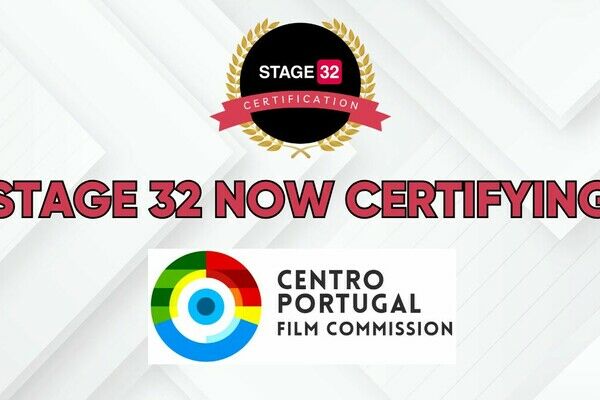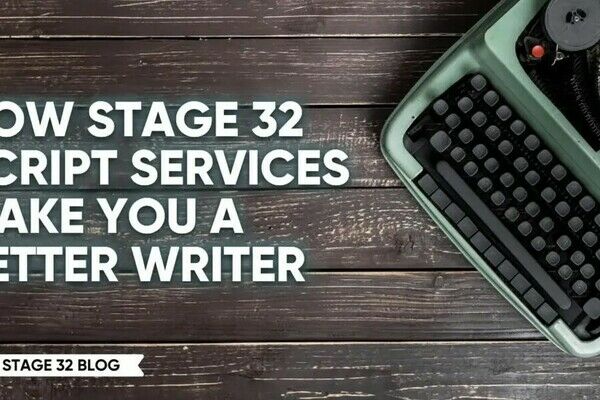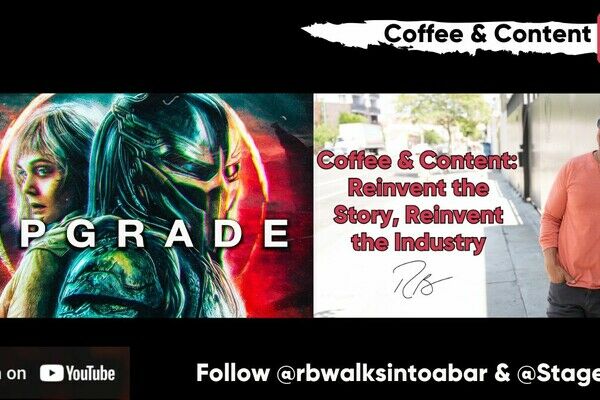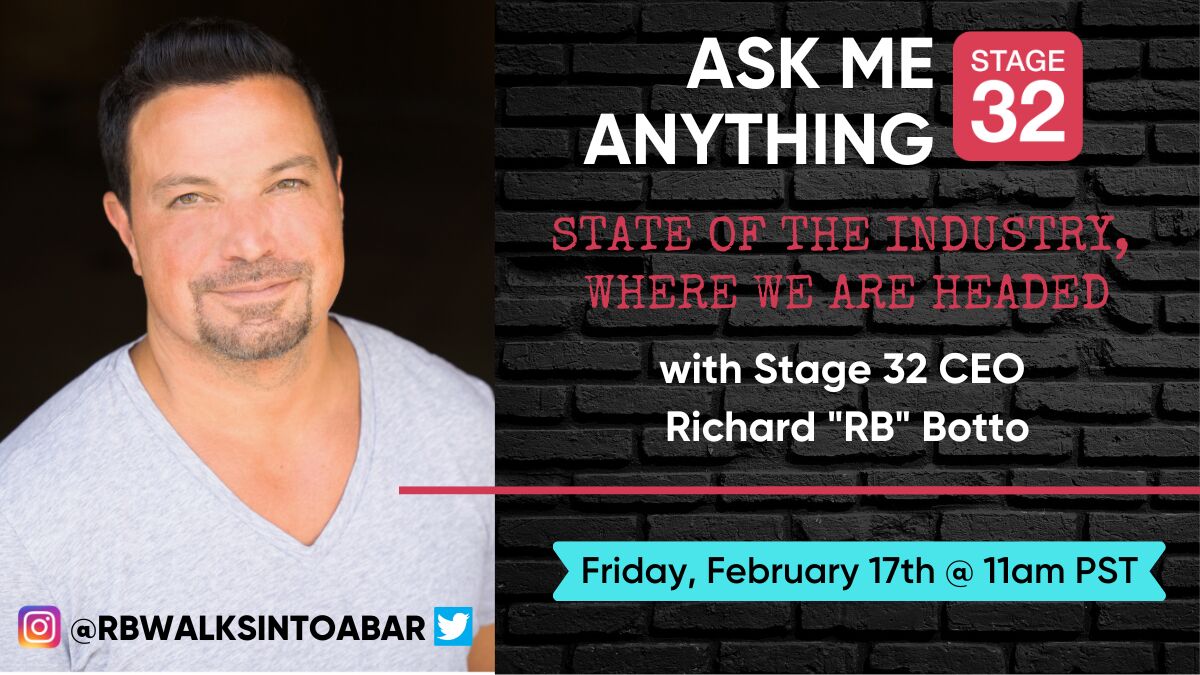Why Feedback on Your Screenplay Synopsis is Essential
Once upon a time, script feedback was only available in one of two ways. Paid or unpaid. As a Stage 32 member, screenwriters can get quality written notes through Industry Standard Coverage or select a reader for Premium Development Notes from an Executive. Plus, members can always reach out through the Screenwriting Lounge to ask fellow screenwriters for a script exchange as a perk of the no-cost Stage 32 membership. But two years ago, one member saw an opportunity to improve as a screenwriter while building community. It was then that The Coverage Report was born.
What is The Coverage Report, you ask? It’s a weekly event exclusive to Stage 32’s Writer’s Room members, where we provide written notes on one member's script, then meet over zoom to exchange verbal notes. The member who provided their script is there to ask questions about the notes, which spurs a conversation about how the screenwriter can get from our notes to an improved revision of the script. In a way, it mimics a class atmosphere, but payment is giving feedback in order to receive feedback. Simply put, it’s a coordinated group script exchange guided by two professional readers; the founder, Lit Kilpatrick, and myself, Kay Ross. Looking back, it’s become more than either of us could have ever imagined!
When chatting with Lit about the inspiration for starting The Coverage Report, he revealed, “I took [Richard Botto's] advice to heart. He essentially said, ‘figure out ways to be valuable to others, and you will find community and longevity as a creative professional.’ This was my way to contribute value.” Thanks, RB! And thank you, Lit, for initiating this group!
As a screenwriter and script analyst, Lit is excited to meet more professionals in development and production. You can reach out to him via Stage 32 Direct Message HERE.
The Coverage Report accepts Writer’s Room members who can attend every week or pop in when they can! It has indeed grown a greater sense of community and even created friendships in real life. Most recently, several of our attendees have seen significant improvement in their writing in a shorter amount of time.
Our moderator, Dustin Quinteros, started seeing contest placement on his script. One of our most dedicated screenwriters, Roy Hsu, is now an optioned screenwriter. And one of our newest, most driven screenwriters, Monica La Vella, was able to greenlight her first feature after receiving a collection of focused notes on her script. We’re so excited for them and to see the event grow year after year!
While The Coverage Report started with reviewing the first 10 pages and evolved to include entire scripts, we eventually saw a pattern where readers wanted to know the ending but didn’t always have the time to read the full script. From member feedback, we came up with a brilliant solution: give written notes on the screenwriter's synopsis instead!
Today’s blog gives you a taste of what we have unpacked since starting The Coverage Report on why revising a screenplay in synopsis form is incredibly valuable. If you’d like to see the full Synopsis Resource Sheet, join us in the Stage 32 Writer’s Room.
Feedback on Script vs. Feedback on Synopsis
After almost two years, we found that most screenwriters needed to work on more fundamental story issues. Reading and re-writing the entire screenplay was a time-consuming way to address these big-picture problems. So this year, we’ve begun reviewing the synopsis instead!
What is a SYNOPSIS? A brief summary of the main plot, from beginning to end, dotted only by the briefest descriptions.
NOTE: We are not asking writers to change their process. If you don’t like outlining before you dive into the screenplay format, no worries! An outline is a summary for a screenplay that has not yet been written, while a synopsis is a summary of a screenplay that has already been written. Therefore everyone should be able to write a synopsis because it only involves simplifying the story you’ve already written.
In fact, to level up as a professional writer, you should make synopsis writing a permanent part of your skill set, as there are two main uses for it: screen craft and business. A synopsis can be used to investigate the effectiveness of your screenplay’s structure, character choices, and whether or not the stakes are compelling. From a craft perspective, this allows you to revise in a 1-5 page document instead of 30, 60, 90, or more pages. What a time-saver!
Once you’ve confirmed the synopsis, however, you can also use it to build a treatment. Additional context like a logline, genre/format, comps, budget range, and distribution upgrades your synopsis to a treatment. With this one short document, you can more easily invite business-minded professionals along for the ride while still respecting their time restrictions. Think about that - a synopsis increases your chances that a producer or development executive will read your story from beginning to end. That’s powerful!
A Synopsis is both a creative and a business tool.
If you’d like to learn more about how to create a pitch document, I highly recommend this webinar hosted by Anna Henry: “How to Write a Professional TV Pitch Document/Treatment - with Downloads.” As a Writer’s Room Member, you’ll get a 10% discount as well!
A Brief Summary on “How to Write a Screenplay Synopsis”
1) Show don’t tell! When translating a screenplay into a synopsis, reduce every scene into a sentence or two, or every sequence into 3-4 sentences. By writing what literally happens from one incident to the next, you avoid the pitfalls of explaining.
Do not tell us ABOUT the story. Tell us the story as if around a campfire.
2) Keep your descriptions BRIEF. Similar to writing a logline, describe your protagonist with only two contrasting words, usually that character’s strength and flaw (e.g. a grieving psychotherapist, an adventurous homebody, or an old soul through the eyes of a six-year-old).
Not sure how to craft a concise logline?
Check out the Stage 32 Webinar Loglines: Sell Your Story in a Single Sentence.
3) Keep your verbs active! Just like your lines of action, no “is” or “-ing” or “-ed” verbs. Also, try to connect your ACTION with either “BUT” (an obstacle) or “SO / THEREFORE” (a dilemma or a decision). Eliminate the phrase “and then” connecting your story beats.
4) Keep your sentences focused on action. If the audience cannot SEE what you’re describing, get rid of it. If what you’re describing is physical but not in motion, then it is a description (adj.) and not action (v.). If, however, what you are describing is both physical AND in motion, then it is considered action.
Wait, wait… hold up, K-Dawg.
What’s the difference between MOTION and ACTION?
HINT: ALL ACTION IS IN MOTION, BUT NOT ALL MOTION IS TAKING ACTION.
*For more info, join the Writer’s Room and get the full Synopsis Resource Sheet!
5) GIVE AWAY THE ENDING! A synopsis summarizes the entire story, so don't shortchange the ending. Make the synopsis just as satisfying as the full script, beginning to end.
We're so excited for another year of elevating our storytelling through The Coverage Report and the Stage 32 Writer's Room. What challenges have you had writing a synopsis? We'd love to hear from you! Of course, you're always welcome to join us Mondays at 4pm PST on The Coverage Report!
This blog was written by Karen "Kay" Ross and Lit Kilpatrick, Writer-Producers and Co-Hosts of The Coverage Report.
Let's hear your thoughts in the comments below!
Got an idea for a post? Or have you collaborated with Stage 32 members to create a project? We'd love to hear about it. Email Emily at blog@stage32.com and let's get your post published!
Please help support your fellow Stage 32ers by sharing this on social. Check out the social media buttons at the top to share on Instagram @stage32 Twitter @stage32 Facebook @stage32 and LinkedIn @stage-32
| Ask Me Anything with Stage 32 CEO Richard "RB" Botto: State of the Industry, Where We Are Headed |
| Breaking In As A Writers' Research Assistant |
Search Stage 32 Blog
There are now 4041 blog posts for you to enjoy. Search them all by tags below.
Acting, Advice, Cinematography, Coffee & Content, Composing, Contests, Distribution, Featured, Filmmaking, Financing, Inspirational, Networking, Producing, Screenwriting, Success Stories, Tips, Trending,Relevant Tags
Recommended Articles

November Write Club Week 4: The Art of the Pitch- What Managers & Execs Actually Want to Hear

Stage 32 Now Certifying Centro de Portugal Film Commission!

What Stage 32's Community Is Really About (Beyond Scripts, Sets, and Showreels)

Coffee & Content: The Genius of Weapons and How to Know When Your Script Is Ready

Wearing Many Hats As A Creative

Coffee & Content: Why Your Pitch Needs to Be Human

Happy Thanksgiving From Stage 32: We Are Thankful For YOU

Stage 32 Certification Featured In IndieWire!

How Stage 32 Script Services Make You A Better Writer






